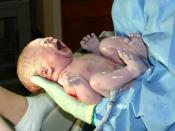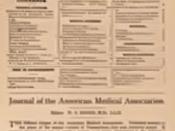Study Finds Anatomical Link for Sids
SIDS is a silent killer that catches babies while they are sleeping and it kills more than 2000 infants under the age of one in the United States each year. A study in the Journal of American Medical Association reveals an abnormality in the brain stem that impairs a baby's ability to regulate breathing.
An eight-year study led by Dr. Hannah Kinney at Children's Hospital Boston compared brain autopsy data from 31 infants who died of SIDS with 10 who died of other causes between 1997 and 2005. This is the first finding to find abnormalities in the brain stem, the part of the brain that connects to the spinal cord and controls basic functions such as heart rhythm and breathing. Thirty of the thirty-one babies had defects in nerve cells that make and use serotonin. Serotonin is critical for regulating breathing, blood pressure and arousal from sleep.
Researchers suspect serotonin defects contribute to at least half of all SIDS cases. Boys have fewer of the particular serotonin receptors in the brain stems than girls, which may explain why boys are twice as likely to die of SIDS. This study strengthens the suspicions that SIDS is a biological problem and not a random death sentence.
The rate of babies dying from SIDS as decreased due to the number of babies now sleeping on their backs.





